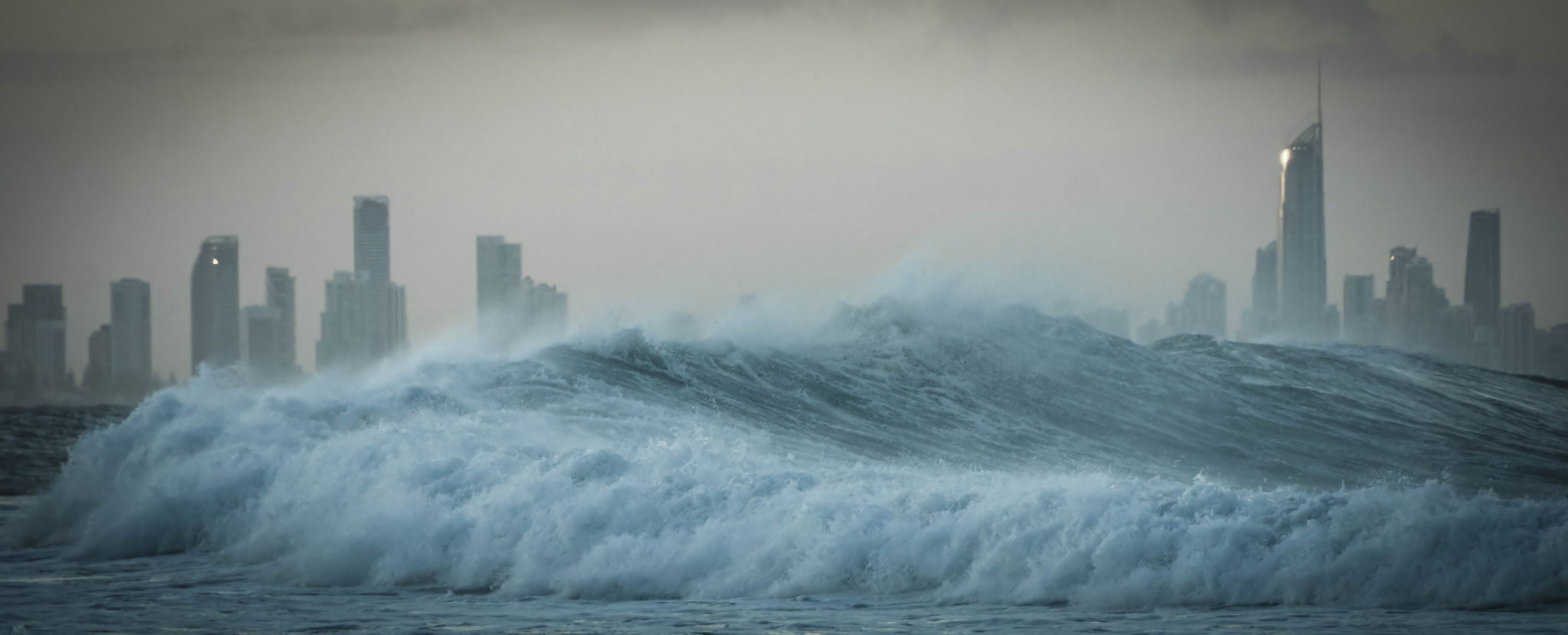10 Most Catastrophic Tsunamis in Modern History
 When they strike, catastrophic tsunamis claim numerous lives and cause horrific damage. A tsunami occurs when energy is transferred from the earth into water, resulting in large waves reaching heights of hundreds of feet. They can be triggered by earthquakes, landslides or volcanic eruptions. Moreover, tsunamis travel up to 500 miles. And most tsunamis occur within the Pacific Ocean. While this natural disaster only occurs twice a year on average, the impact is colossal. Listed below are 10 famous tsunamis that everyone should know about.
When they strike, catastrophic tsunamis claim numerous lives and cause horrific damage. A tsunami occurs when energy is transferred from the earth into water, resulting in large waves reaching heights of hundreds of feet. They can be triggered by earthquakes, landslides or volcanic eruptions. Moreover, tsunamis travel up to 500 miles. And most tsunamis occur within the Pacific Ocean. While this natural disaster only occurs twice a year on average, the impact is colossal. Listed below are 10 famous tsunamis that everyone should know about.
10 Most Catastrophic Tsunamis
- Indian Ocean
In 2004, the world saw one of the most catastrophic tsunamis in the Indian Ocean. A magnitude 9.1 earthquake caused the ocean floor to rise a shocking 40 meters, with waves rising heights of hundreds of feet. Consequently, the fault line covered 900 miles and touched the shores of India, Sri Lanka, Thailand and Indonesia. Unfortunately, this tsunami led to the death of approximately 230,000 people and caused $10 million worth of damage. - North-Pacific Coast, Japan
One of perhaps the most catastrophic tsunamis hit the North-Pacific coast of Japan in 2011. After a 9.1 earthquake occurred just miles off the coast, an alert went out warning locals to find safety. This was the largest earthquake in Japanese history and the fourth largest in the world. Moreover, local nuclear power plants worsened the situation, as one plant cooled down and melted from the water. Ultimately, this led to four days of continuous radiation that required two weeks of clean up. - Portugal and Morocco
In 1755, an unexpected earthquake hit Lisbon on All Saints Day. Consequently, most people were in church when the tsunami arrived. The waves killed between 60,000 to 100,000 people along the coasts of Portugal and Morocco. Shockingly, some of the debris from Lisbon traveled as far as the Caribbean. As one of the most catastrophic tsunamis in European history, this disaster remains a pivotal point in European history, as seen in subsequent artwork and philosophy of the time. - Messina, Italy
In 1908, the small town of Messina suffered a 7.5 magnitude and subsequently a tsunami. With waves as high as 40 feet, this tsunami devastated the land of the agricultural community. Thus, many people relocated after the disaster. Most people immigrated across Italy, however, some traveled as far as the U.S. - Krakatau, Indonesia
While earthquakes usually cause tsunamis, a volcanic eruption caused the tsunami of 1883 in Indonesia. The eruption of the Krakatau Volcano led to a tsunami, with waves extending as high as 98 feet. Surges from the tsunami lasted approximately 29 to 30 hours and reached as far as New Zealand. - Southern Chile
In 1960, the world’s largest earthquake occurred in the southern part of Chile. At a magnitude of 9.5, this earthquake had a global impact. Accordingly, waves from the resulting tsunami traveled as far north as the U.S., causing $23.5 million worth of damage in Hawaii. And in Japan, more than a day after the earthquake, tsunami surges caused 139 deaths. Overall, this tsunami left an estimated 2 million homeless in Chile. - Sanriku, Japan
Once again, Japan finds itself on the list of most catastrophic tsunamis. In 1896, an atrocious earthquake rocked Sanriku, Japan. Having had several minor earthquakes earlier that day, locals did not anticipate a tsunami. However, after an 8.5 magnitude earthquake rocked the surface, tsunamis waves crashed into the shore. At the time, no preventative measures were available to warn locals of the incoming tsunami and the disaster claimed 22,000 lives. - Central Chile
Like Japan, Chile commonly experiences from tsunamis. In 2010, an earthquake spanning 62 miles ruptured in central Chile. Approximately 12 million people felt the ground tremble. Shortly thereafter, a tsunami struck. This tsunami damaged, if not destroyed, 370,000 houses and 4,013 schools. - Arica, Chile
In 1868, Arica, Chile (then Peru) experience a 9.0 magnitude earthquake and resulting tsunami. Subsequently, Chile makes the most catastrophic tsunamis list for the third time. Three naval ships were docked at the port city, of which only two crew members survived. Thirteen hours after the initial incident, waves hit New Zealand and caused damage to local harbors. - Mount Unzen
Like the case of Krakatau, this tsunami began when Mount Unzen erupted in 1792. Consequently, this led to an estimated 15,000 deaths. Interestingly, in 1990, the mountain began to release ashes.
While stories of catastrophic tsunamis seem frightening at first, there are preventative measures being implemented. For instance, starting in 2004, the Indian Ocean Tsunami Warning and Mitigation System has installed sensors in the ocean floorboards. Run by the Intergovernmental Coordination Group and Unesco, IOTWMS sensors detect incoming tsunamis and alert officials.
In addition, as scientists conduct more research on the history of tsunamis, they can better predict the likelihood of tsunamis in specific regions. Ultimately, while tsunamis are a powerful force, there is hope for improved prevention strategies in the future.
Photo: Flickr
